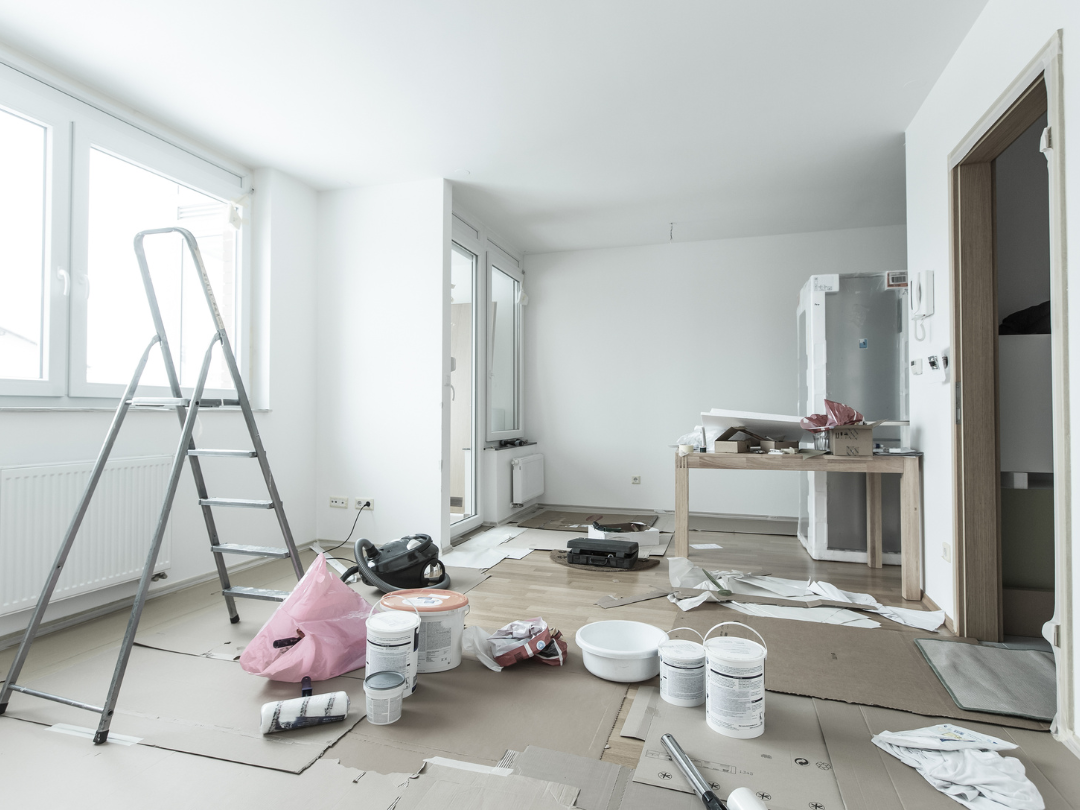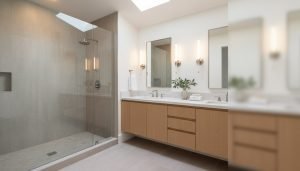Get the week's most popular posts delivered to your inbox.
Our weekly update is free yet priceless and you're less than a minute away from getting the current edition.
In the unlikely event we disappoint, you can unsubscribe with a single click!
Last Updated on October 30, 2025 by teamobn
Got an extra room that sits unused? With smart planning, you can turn it into a teaching studio that feels calm and productive. We’ll map out layout options, storage, and lighting. You’ll see what to buy, what to build, and what to skip. The plan supports homeschool programs without turning your house into a school.
Contents
Reasons to Create a Dedicated Homeschool Space
A defined room reduces distractions and sets a learning rhythm. Kids switch into study mode faster when the environment signals purpose. Materials stay organized, so transition time drops and lessons start on time. Safety improves with anchored furniture, cord control, and clear sightlines.
Acoustics and lighting can be tuned for reading, screen work, and hands‑on projects. Cleanable surfaces and labeled storage make resets quick, which keeps motivation high. Homeschool programs thrive when the space supports different learning styles without chaos. You also gain a professional setting to meet families and confidently host homeschool programs.
Smart School Supplies That Keep Learning Moving
Outfit the room with durable, age‑appropriate tools. The right supplies prevent downtime and keep transitions smooth. Stock smart, label clearly, and keep backups for homeschool programs.
Core Writing, Paper, And Notebooks For Daily Work
Start with lined and unlined notebooks, composition books, and graph pads. Add printer paper, index cards, sticky notes, and sentence strips. Keep pencils in multiple grades, fine‑tip pens, dry‑erase markers, and highlighters. Include manual and electric sharpeners.
Clipboards and whiteboards support flexible seating. Rulers, protractors, and compasses cover basic geometry. Put everything in labeled caddies at kid height. Refill weekly so you never halt a lesson for missing basics.
Art, Craft, And Mess‑Ready Materials For Creativity
Stock washable tempera, watercolor sets, and non‑toxic acrylics. Add brushes, palettes, and paint cups with lids. Keep construction paper, cardstock, felt, craft sticks, glue sticks, and tacky glue. Round‑tip scissors, craft knives for adults, and self‑healing mats protect surfaces.
Aprons, table covers, and drying racks make cleanup fast. Store glitter and tiny beads in locking bins. Rotate materials to spark new ideas without overwhelming the room.
Math, Science, And STEM Kits For Hands‑On Learning
Use base‑ten blocks, place value charts, fraction tiles, and counting links. Add measuring cups, balances, thermometers, and stopwatches for experiments. Simple microscopes, slides, and magnifiers invite observation. Robotics kits, snap‑circuit sets, and breadboards build engineering habits.
Keep magnets, pulleys, and simple machines for demonstrations. Clear bins with photo labels cut setup time. Homeschool programs benefit when math and science tools stay visible and ready for quick labs.
Technology, AV, And Power Accessories For Instruction
Provide a reliable laptop or tablet for teaching, plus a large display or short‑throw projector. Add a document camera for modeling worksheets. Include a Bluetooth speaker and a basic microphone for clear audio.
Use a labeled charging station with cable ties and spare cords. Surge protectors and a UPS keep gear safe during outages. Load essential apps and keep offline copies of plans. Test the setup before every session.
Organization, Storage, And Labeling To Build Independence
Open shelving with photo labels helps kids self‑serve and reset the room. Rolling carts keep daily bins mobile. Use magazine files for subject folders and portfolios. Color‑code shelves to match zones.
Lock one cabinet for chemicals and sharp tools. Post a simple map of where items live. Add a returns basket for stray supplies. Independence grows when students can find and put away materials without help.
Cleaning, Health, And Safety Supplies For A Ready Room
Keep disinfecting wipes, hand soap, and paper towels near a sink or cleaning station. Add tissues, non‑latex gloves, and a touchless trash can. Store a basic first‑aid kit with a checklist. Use spill kits for paint and science messes.
Place a small broom, dustpan, and compact vacuum on a hook rail. Refresh supplies on a schedule. A clean, stocked room reduces interruptions and keeps focus on learning.
PE, Movement, And Sensory Tools For Energy And Focus
Gather foam balls, floor dots, jump ropes, and resistance bands for quick movement breaks. Add yoga mats and a timer for guided stretches. Sensory tools like fidgets, weighted lap pads, and noise‑dampening earmuffs support regulation.
Balance cushions and wobble stools offer active seating. Use a small rack to keep gear tidy. Short, structured movement resets attention without chaos.
Assessment, Testing, And Recordkeeping Tools For Compliance
Prepare clipboards, checklists, and rubrics for quick evaluations. Use binders or digital folders for work samples and progress notes. Keep timers for fluency checks and oral readings. Laminate reference charts for reusability.
A date stamp and file sorter streamline paperwork at day’s end. When records stay accurate and accessible, reporting is easier and meetings with families run smoothly.
Choose a reputable online teaching supplies store to save time and avoid poor‑quality gear. Look for clear specs, real reviews, fair warranties, and reliable shipping. Bulk pricing and educator discounts stretch budgets.
Strong customer support and easy returns reduce risk. Homeschool programs run better when your store delivers consistent stock, fast replacements, and products that match classroom demands.
Choose the Right Room
Pick the room that supports focus, safety, and flow. A smart choice lowers costs and speeds setup. It also shapes storage and tech needs in homeschool programs.
Size, Shape, and Circulation
Aim for a room that fits tables, a reading corner, and a small movement zone without feeling cramped. Rectangular rooms are easier to zone than tight squares. Leave clear walkways from door to seating.
Keep sightlines open so you can supervise with one glance. Avoid narrow rooms that force furniture into a single line. Test layouts with painter’s tape before buying anything. If traffic feels pinched, choose a larger space or reduce furniture depth.
Daylight, Glare, and Ventilation
Windows boost mood and alertness. Balance daylight with glare control using blinds or sheer panels. Place screens sideways to windows to limit reflections. Add task lights for cloudy days. Make airflow a priority.
A ceiling fan and operable windows help keep air fresh. If the room runs hot, choose shades facing west or add reflective film. Stale air hurts focus. Consider a portable purifier and check that supply vents aren’t blocked by shelving.
Noise, Privacy, and Neighbors
Quiet promotes reading and deep work. Pick a room away from laundry, TV areas, and street noise. Carpets, rugs, and curtains absorb echoes. Solid doors beat hollow cores for privacy. If you expect group sessions, avoid rooms that share thin walls with bedrooms.
Add door sweeps and weatherstripping to cut sound leaks. Keep noisy makerspace tools in lidded bins. If the only option is near noise, double up on soft finishes and use white‑noise when needed.
Access, Utilities, and Amenities
Choose a room near a restroom and a sink if possible. Messy projects stay manageable when cleanup is close. Check outlet count and circuit capacity for printers, chargers, and displays. Plan cable routes and a safe charging zone.
Strong Wi‑Fi or a hardwired line prevents dropped calls during lessons. Street access matters if parents will drop off kids for homeschool programs. Level thresholds help with carts and storage totes. Closer outdoor access expands your project options.
Code, Safety, And Liability Basics
Safety and compliance protect kids and your home. Plan core protections early to reduce risk, speed approvals, and keep daily sessions running smoothly.
Know Local Codes And Permits
Check zoning, occupancy limits, and any change‑of‑use rules before work begins. Confirm smoke and carbon‑monoxide detector requirements. Ask your city or county about permits for electrical or structural changes. Document every approval. Keep copies on site.
Design For Egress And Fire Safety
Maintain two clear exit paths where possible. Keep doors unlocked during sessions and free of obstructions. Install interconnected smoke and CO detectors. Place a Type ABC fire extinguisher near the exit. Run a monthly test and log it.
Electrical And Data Safety
Use tamper‑resistant outlets and cord management to prevent trips. Add GFCI protection near sinks. Avoid overloading power strips. Label chargers and create a supervised charging station. Hardwire key devices or secure Wi‑Fi with strong passwords.
Health Supplies And Incident Readiness
Stock a first‑aid kit, non‑latex gloves, instant ice packs, and disinfectant. Keep emergency contacts and allergy notes in a binder. Log every incident with date, time, and action taken. Review trends and update procedures.
Visitor Management And Pickups
Create a sign‑in and sign‑out process with ID checks for new adults. Post pickup windows and a late policy. Use doorbell cameras or peepholes for verification. Keep the entry visible from the main room.
Insurance And Waivers
Speak with your insurer about liability and medical payments coverage. Ask if a rider is needed for group activities. Use a simple participation waiver reviewed by a professional. Store signed copies securely.
Background Checks And Reporting
Require background checks for any adult leading unsupervised activities. Recheck on a schedule. Provide a clear policy for reporting concerns. Share the policy with families at enrollment.
Equipment Anchoring And Childproofing
Anchor bookcases, pegboards, and large screens to studs. Add corner guards at toddler height. Use cabinet locks for chemicals and sharp tools. Cap unused outlets and secure door stoppers.
Emergency Plans And Training
Post evacuation maps with meeting points. Practice drills twice a year. Keep a charged phone and a backup battery in the room. Train helpers on extinguisher use and medical kit contents.
Recordkeeping And Signage
Maintain a binder with permits, insurance certificates, emergency contacts, and drill logs. Post rules for behavior, tech use, and cleanups. Add clear labels to exits, kits, and shutoffs. Update documents each term.
Conclusion
Homeschool programs matter because they let families shape pace, values, and support. A dedicated space turns that intent into daily consistency. Clear zones, safe wiring, and tuned lighting reduce stress and interruptions.
Flexible furniture, labeled storage, and good acoustics keep kids focused and you organized. Invest in a room that works like a small studio and you’ll give homeschool programs the structure they need to thrive.Having a place to play can also do wonders for your kids. Check out our guide on creating these spaces!
Get the week's most popular posts delivered to your inbox.
Our weekly update is free yet priceless and you're less than a minute away from getting the current edition.
In the unlikely event we disappoint, you can unsubscribe with a single click!






